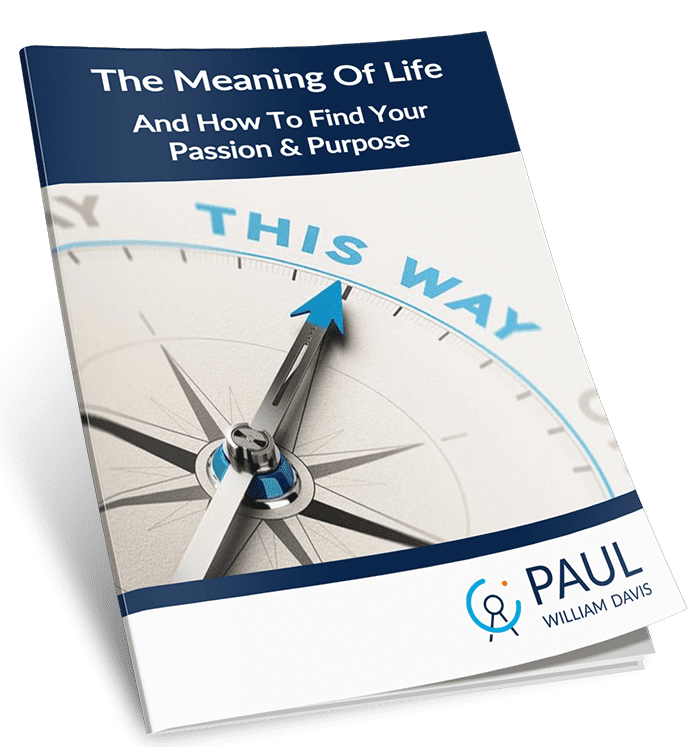We all encounter fearful moments in our lives. Indeed, each of us has triggers that initiate a fear response.
There are seven different types of fear that we’ll look at in this post. We’ll also delve into what happens in our minds when we encounter fear. More importantly, what can we do to dissolve the fear in our lives?
Well, let’s jump right into it.
Fear is the anticipation of a future event that we perceive poses a risk.
Now, if it’s a future event, that means it hasn’t happened yet. And, if it hasn’t happened, then the risk we perceive is all in our minds.

These are the seven types of fear among most people:
Fear of failure is the perception that we won’t achieve our desired level of success or a particular desired outcome.
In essence, fearing failure is about something in the future that we’re holding onto, a reward we look forward to that may not materialise.
It can be the loss of money, time, effort, relationships, or even property. We might also fear losing our careers or reputation.
It usually comes up when we start thinking to ourselves: “I don’t have the courage to do something,” or, “I’m not good enough to do something. Who am I to stand on stage and give a talk about something? Who am I to write an article and, say, put forward my expertise, for example?”
Sometimes we fear that we don’t have what it takes to succeed. For instance, we don’t have the appearance or the looks that we would like to have. We don’t possess the know-how or have the fitness or expertise, whatever it might be.
In essence, we fear losing our standing in the community or even family as individuals, business owners or even as entrepreneurs.
So, for something that might happen at a future event, we fear losing the respect we currently have or our standing within our community, family, environment, business, or how people perceive us.
It can be a rejection from a partner, staff member, client, or even from society, our community, or even family.
We fear getting ill and what might happen to us when we do. What are the implications for our families and us? What if we die? What then happens to our siblings and the people we’re responsible for?
These could be societal, religious, political or moral codes. For many years, many people have feared breaking the rules laid down by their religions, for example.
If you look at the COVID-19 pandemic, people fear breaking the laid down health restrictions. That fear can build up with other people and within ourselves.
So, those are the seven types of fear. How do you deal with them, and what happens if you don’t?
Failing to deal with fear clouds our judgement. We stop looking for alternatives and opportunities that might be around us.
Fear leads to action paralysis. Ultimately, it prevents us from operating from the Executive Center of our brains, and we fall out of equilibrium.
When you’re not operating from the Executive Centre part of your brain, you’re not connected as easily to the Unconscious and SuperConscious. That prevents you from seeing opportunities and seeking creative ways to get out of your predicament.
Most people deal with fear-inducing events in two ways: Fight or flight. However, there’s a third response: Freeze. Meaning we somewhat get paralysed in our moment of thinking.
When fearful events occur, our brain starts operating from the amygdala part of our brain. When we experience that fear, stress hormones begin to build up in our bodies.
As the stress hormones build-up, our body begins to contract. We begin to stoop and move to the fetal position to protect ourselves.
Our breathing becomes shallow. We start to build castles and stories in our minds of all the things that could happen. And, these are typically not good castles. They are horrific stories because we fear the worst.
We fear what’s going to happen in the worst-case scenario. Soon, that spirals out of control.
Because there’s so much emotion around the fear that’s building up, the fear becomes fact, meaning we manifest more of it in our lives. This gives us the evidence that compounds that fear.
Anxiety can become a fact if we stick to that moment and indulge in the fear emotion.
When you’ve got the thoughts matched with the emotions and feelings, that’s what you’re going to manifest.
Faced with a spiralling cycle of fear, fearful emotions and negative manifestations of that fear, how do you reset your brain and start dealing with your fears?
When faced with fear or stressful situations, the first thing we need to do is reset our brains. How do we do that?
Well, I’ve mentioned above that fear makes your body contract. When your body contracts, it releases more stress hormones to deal with the perceived upcoming event.
The fastest way to reset your mind is through breathing exercises. Here’s a very simple technique you can try:
Inhale for five seconds, hold your breath for five seconds and then exhale for five seconds.
Try it now.
How did that feel?
You may be asking, what does breathing have to do with my mind and my current fears?
Well, breathing expands the body. It moves you from the fetal position because your body has to take over your lung’s full capacity. As that happens, your brain is going through a whole load of activities, releasing feel-good hormones and slowing down so you can fully assess the situation.
You can do this exercise while driving, sitting on the couch or doing an activity. When you do the exercise, you will notice a massive difference in your mind and your body.
If you repeat it a few times, significant changes start happening in your body and mind that help you dissolve fear.
People have different ways of dealing with fear.
For instance, some say: “Well, feel the fear and do it anyway.” However, that doesn’t always work. It doesn’t remove the fear. It calls for you to step over the fear and do something, but the fear is still there.
Feeling fear and doing something works sometimes. But, not in all situations.
Other people resort to cliches. One popular one goes like this: Fear stands for False Evidence Appearing Real. In many ways, that’s true. However, it still doesn’t remove the fear.
And other people want to say, just think positively, don’t think about the fear, think of its opposite and get on with your life.
Now, while that makes sense in some instances, it doesn’t deal with fear.
In dealing effectively with fear, we need to operate from a state of equilibrium because it makes us objective.
We can see both sides of our narrative. But, we’re also working from the Executive Center, with the Unconscious and the SuperConscious. That’s how we start manifesting more extraordinary things in our life.
To fully dissolve fear, we need to work with how our brains function. When faced with fear, our conscious mind starts creating these horrific mental stories of the worst-case scenarios. And we tend to get attached to that outcome.
To flip that around, we need to think objectively, and we can only do that by asking questions that help us reframe the situation.

First, to remove or dissolve a fear, we must also remove the trigger. These questions can help with that too.
Name your fear. What’s the worst that can happen if it materialises? Look back through the seven most common fears and identify yours.
In other words, do you have any tangible evidence to support your fear right now?
In most cases, you’ll find that you don’t have any tangible evidence right now that supports your fear.
Because, if you go back to the definition of fear, fear is the perception of a future event, so the event hasn’t happened yet.
So, therefore, there’s no evidence right now to substantiate, to make that fear, to make the answer that you gave to the first question, to make it absolutely true, to make it factual.
When you start asking this question, you’ll find that you don’t have any actual evidence right now as it pertains to a perceived future event.
Take the fear of losing your house, for example.
When you start to look at the evidence, you realise, well, you’re still making the mortgage payments or rent. You haven’t gotten any letter from the bank about repossessing your home. You don’t have any definite evidence that you’ll lose your house.
So, therefore it’s false.
In disproving the cause of your fear, you start to think of alternatives.
Our minds are naturally drawn towards the negatives and drawbacks. (Just think of the news!)
However, even negative situations sometimes have a silver lining. What you need to do is force your conscious mind to start looking at the benefits of your current situation.
In doing so, you may start to discover benefits you’d not seen before. When you do, you slowly bring your mind back to equilibrium.
I’ve discussed how to find your life purpose here.
When you know your life purpose, you may realise that what you consider a fear right now might be a stepping stone bringing you closer to living your life purpose.
The more objective way is to understand the Law of Duality that there are always two sides – positives and negatives, benefits and drawbacks.
When you realise this, you start seeing better ways of dealing with your fears and bringing you more into equilibrium.
Take the example above where you fear losing your home, the learning you can take from that moment is perhaps around how you manage your financial affairs, who else is there that can support you that you didn’t recognise before, or how to save money which will be of significant benefit to you as time goes by.
Ultimately, when you answer these questions truthfully, you’ll find your fear completely dissolved.
Fear is a feedback mechanism. It reminds us that we’re not at equilibrium, or that we’re not living our purpose or that we’re attached to something.
Therefore, when we bring ourselves back to equilibrium through the exercises above, fear stops showing up because we see both sides.
Equilibrium happens when we are connected with our Unconscious and the SuperConscious. When we’re in balance and not attached, there is no fear.
Now, is fear going to show up at some point in your life? Of course. It happens when you haven’t dissolved a trigger or as feedback that you’re unhealthily attached to something.
Therefore, you must also dissolve the attachment. When you get attached to something, such as money, your relationship, reputation, etc., it swings the pendulum out of equilibrium.
Your Executive Center, Unconscious and SuperConscious aren’t aligned.
Dealing with the attachment and fear trigger helps you get back to equilibrium.
To dissolve fear and deal with anxiety, first, reset your brain through a breathing exercise like the one mentioned earlier: Breathe in deeply for five seconds, hold your breath for five seconds and then exhale slowly for five seconds.
Second, identify what you fear and dissolve it through the objective questions exercise.
Finally, identify your attachments and fear triggers and dissolve them to get back to an equilibrium state.
Next time you face fear, go through this process for yourself. You’ll find out that it aligns you with your Executive Center, Unconscious and SuperConscious, and lets you operate at a much higher level.
Want to learn more strategies for dealing with fear and anxiety? Join our online community, where we go deeper into the psychology of fear and use it to your advantage.
You can use the form below to send a message directly to Paul.
